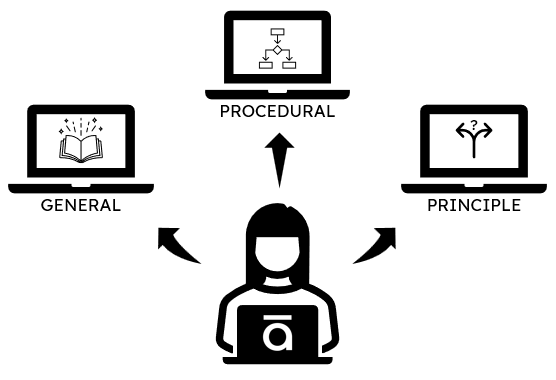Key Steps in Building the Right Type of E‑Learning Course
There is more than one type of e‑learning course. Some are simple explainer courses, some cover procedural steps, and others teach principled decision-making. How do you choose the best one for the job?

How to build the right type of course
The objective of an effective e-learning program is to create the best courses possible with the resources at hand. From what I see, most e-learning courses are simple, explainer-type content. This is fine in the right context. However, many of those courses tend to be overbuilt with superfluous interactivity.
One way to build the right type of course is to understand the types of courses typically created and where they fit in your e-learning ecosystem.
First, focus on the right objectives
We don’t always have control over the course requests we get. If you’re a consultant who is getting paid by a company to build a course, odds are they’re expecting some sort of measurable impact. However, that’s not always the case if you’re an internal training team where the decision to build training is already made and you’re just there to make sure it gets created.
In an ideal world you get your client to identify clear, measurable objectives and you build the right course for them to meet those objectives. This helps prevent the information dumps that many courses become.
Second, understand the type of course

In a simple sense, e-learning courses generally focus on sharing information or changing performance.
There are three basic course types:
- General information. These courses are designed to share general information with no expectation of performance improvement. Think of them like reading an owner’s manual. Good information to support learning, but not a real learning experience.
- Procedural information. A lot of training is specific to products or processes. This is true when teaching step-by-step instructions that don’t allow for a lot of interpretation. Most software training falls into this bucket. Or perhaps a procedure like how to process a returned item.
- Principled information. There are many types of courses where there are no clear procedural steps. For example, dealing with employee issues. In those cases, it’s about learning guiding principles on which to base decisions.
While the list above is relatively simple, it doesn’t mean the courses that are built have to be simple. They can be as simple or complex as the subject and budget allow. However, in most cases, principle-based courses require more nuanced decision-making and thus building that type of course will take more time than one where it’s only organized content.
The first step in all of this is to know if the course has performance expectation or not. And then identify and build the right type of course.
You may also like

Big Moves, Big Wins: Articulate’s 2024 Year in Review
Check out six milestones—from game-changing features to prestigious awards— that shaped our e-learning year.

